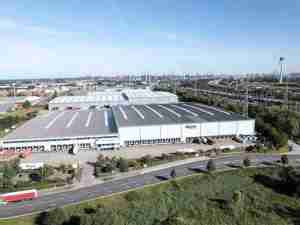“This past year was one of the most difficult business environments anyone can remember,” said Rich Cooper, CEO for the Ports of Indiana. “Thanks to our innovative and determined port companies, and some hard work by our team, we were able to see some moderate increases in overall shipments. Indiana’s three ports handled more cargo in the last quarter of 2009 than in any other quarter since 2006, so hopefully that’s a harbinger for 2010.”
In 2009, the Port of Indiana-Mount Vernon handled a 20-percent increase in shipments versus the previous year and its highest tonnage in 15 years. Growth in coal and grain movements, coupled with steel volumes that were six times the previous year’s, helped the Ohio River port reach its third highest year-end tonnage since opening in 1976.
About 230 miles upstream at the Port of Indiana-Jeffersonville, salt imports reached an all-time high, up 62 percent, and grain increased 18 percent from the previous year. On Lake Michigan, the Port of Indiana-Burns Harbor shipped nearly six times as much grain in 2009 as the previous year and increased salt shipments by 42 percent.
The Ports of Indiana is a statewide port authority that operates a system of three ports on the Ohio River and Lake Michigan. The mission of the Ports of Indiana is to develop and maintain a world-class port system that operates as an agile, strategically-driven, self-funded enterprise dedicated to growing Indiana's economy.
More than 60 companies operate at Indiana’s three ports. The Ports of Indiana manages approximately 2,600 acres of property along the Ohio River and Lake Michigan – and has 800 acres available for future development.
"We believe Indiana has the premier inland port system in North America,” Cooper said. “Where else can you find a statewide system of ports connected by water to both the Atlantic Ocean and the Gulf of Mexico? Our goal is to create a sustainable competitive advantage for our customers and the state of Indiana.”









